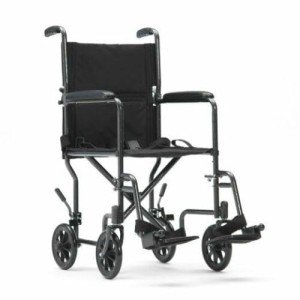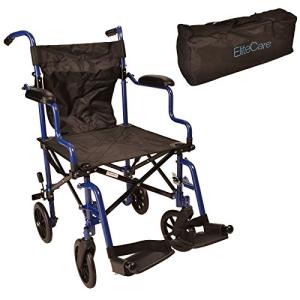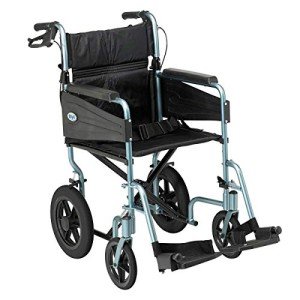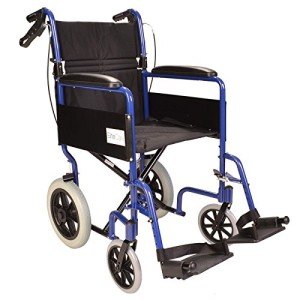In recent years, advancements in medical technology and product design have greatly improved the lives of individuals with mobility challenges. One such innovation that has garnered much attention is the ultralight foldable wheelchair with hand brakes. This guide explores the features, benefits, and considerations associated with these modern mobility aids, providing valuable insights for potential users and caregivers alike.
Understanding Ultralight Foldable Wheelchairs
Ultralight foldable wheelchairs are designed for ease of use, portability, and comfort. Weighing typically between 15 to 30 pounds, these wheelchairs are made from lightweight materials such as aluminum or carbon fiber, which enhances their maneuverability while maintaining durability.
Key Features
-
Foldable Design: The ability to effortlessly fold the wheelchair is paramount for transportation and storage. Many models allow users to collapse them with one hand, enabling greater independence and convenience.
-
Hand Brakes: Unlike traditional wheelchairs that may require assistance for stopping, ultralight models often come equipped with hand brakes. These brakes provide the user with an additional layer of control, enhancing safety while navigating various terrains.
-
Adjustable Components: Many ultralight foldable wheelchairs feature adjustable armrests, footrests, and seat height, allowing for customization according to individual needs for maximum comfort.
-
Pneumatic or Solid Tires: Depending on the model, users can choose between pneumatic tires that provide a smoother ride and solid tires that are more puncture-resistant.
-
Comfortable Seating: Unlike older models with standard hard seats, contemporary chairs often include padded seats with breathable materials to ensure comfort during extended use.
Benefits of Ultralight Foldable Wheelchairs
-
Increased Mobility: The lightweight design allows users to maneuver easily in various environments, from home settings to outdoor excursions.
-
Enhanced Independence: With hand brakes and an easy folding mechanism, users can navigate stairs, curbs, and inclines with greater confidence.
-
Portability: Ultralight wheelchairs can be easily transported in vehicles, making them ideal for travel and outdoor adventures, including vacations or day trips.
-
Health Benefits: By encouraging active participation through self-propulsion, these wheelchairs help users maintain muscle strength and improve overall health.
-
Aesthetic Designs: Today’s ultralight wheelchairs often come in various colors and styles, allowing users to express their personal tastes while meeting mobility needs.
Key Considerations
While ultralight foldable wheelchairs have many advantages, there are essential factors to consider before making a purchase.
Weight Capacity
Most ultralight wheelchairs have a weight limit ranging between 250 to 350 pounds. It’s crucial for users to select a model that accommodates their weight to ensure safety and functionality.
Terrain Suitability
Different wheelchairs are designed for different surfaces. Users should consider where they will primarily use their wheelchair—whether on smooth pavement, gravel paths, or rough terrains—and select models with appropriate wheel types for those conditions.
Price Range
Ultralight foldable wheelchairs can range in price from a few hundred to several thousand dollars. It is advisable to assess budget constraints while also factoring in durability and features that address specific needs.
Maintenance and Repair
Despite being lightweight and durable, routine maintenance is important to prolong the life of any wheelchair. Users should learn about basic maintenance, such as tire pressure checks and brake adjustments.
Availability of Accessories
Many users may require additional accessories, such as storage bags, cup holders, or specialized cushions for added comfort. Checking for compatibility with accessories can enhance usability.
Frequently Asked Questions (FAQs)
1. Are ultralight foldable wheelchairs suitable for outdoor use?
Yes, many ultralight foldable wheelchairs are designed for outdoor use, but it's essential to select a model with appropriate tires and build quality to navigate varied terrains effectively.
2. How do I know the right size wheelchair for me?
Choosing the correct size typically involves measuring the user's seat width, height, and weight. Many manufacturers offer sizing guides or customer support to assist in selecting the appropriate dimensions.
3. Are ultralight foldable wheelchairs covered by insurance or Medicare?
Coverage varies by policy and individual circumstances. It’s advisable to consult with insurance providers to understand what is included and pursue necessary documentation.
4. Can I customize my ultralight foldable wheelchair?
Absolutely. Users can often find options for customizations, including seat cushions, armrest designs, footrests, and unique colors, depending on the brand and model.
5. How do I maintain my ultralight foldable wheelchair?
Regular maintenance includes checking tire pressure, inspecting brakes, cleaning the frame, and ensuring moving parts are lubricated. Users should follow the manufacturer’s maintenance recommendations for longevity.
The ultralight foldable wheelchair with hand brakes represents a significant step forward in mobility assistance, empowering users with greater freedom, safety, and confidence. Through innovations in design and technology, these wheelchairs not only improve the overall user experience but also cater to the diversity of needs among individuals with mobility challenges. As our society grows increasingly aware of the needs of people with disabilities, tools like ultralight wheelchairs will continue to make strides in promoting independence and accessibility, creating a more inclusive environment for all.






